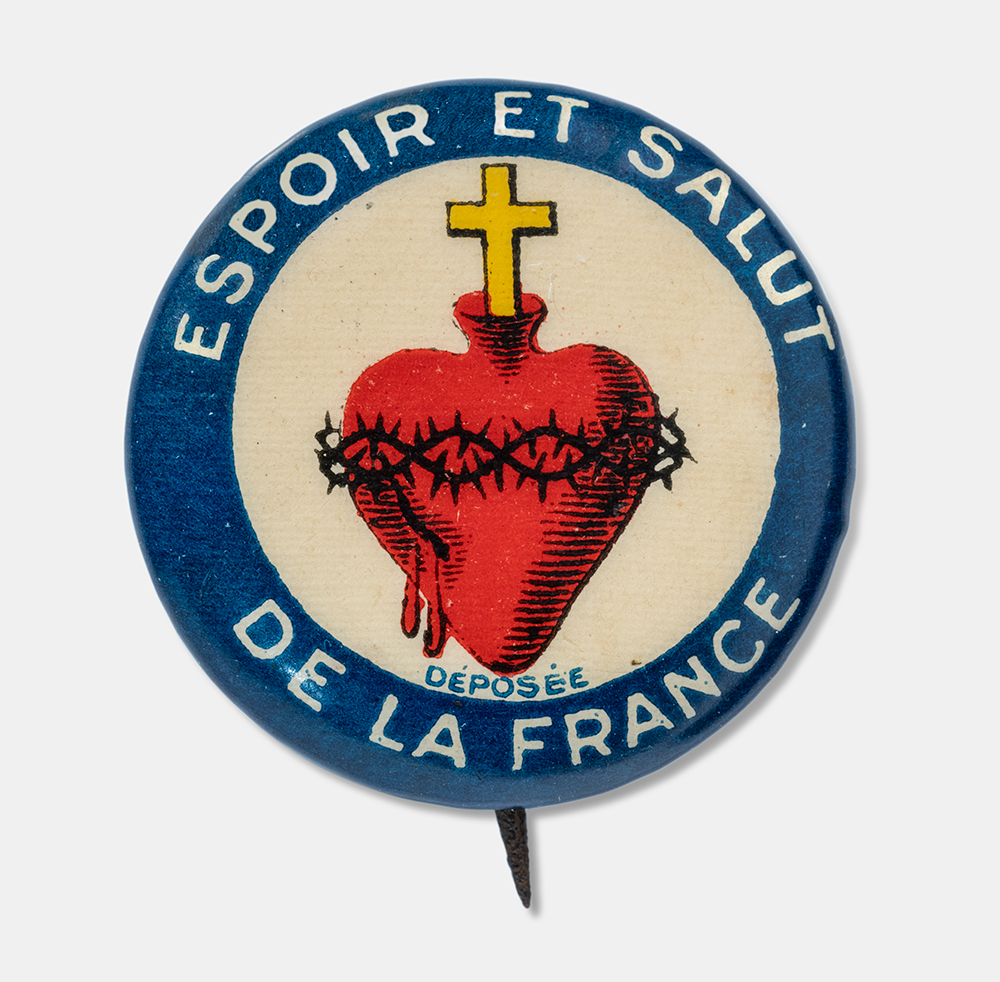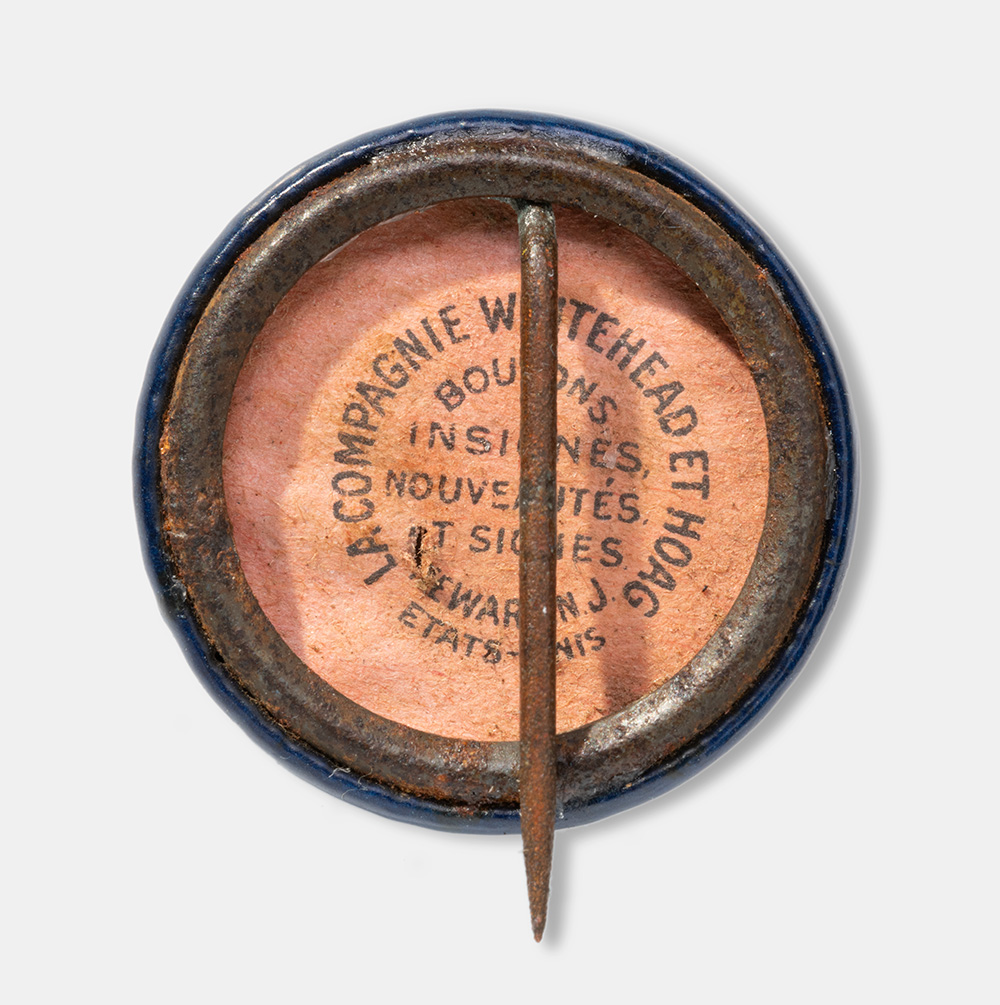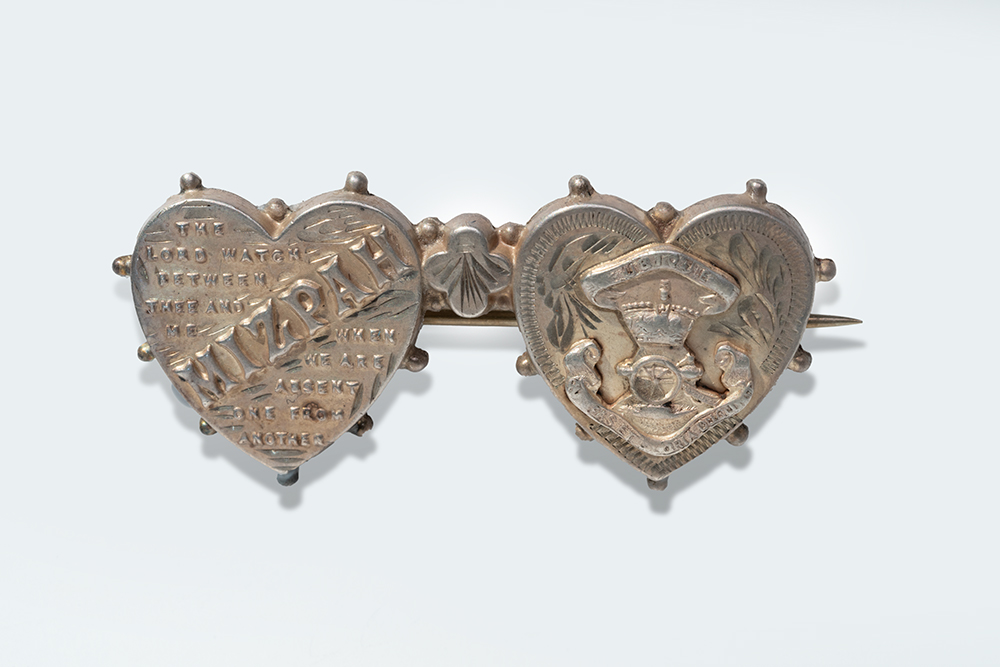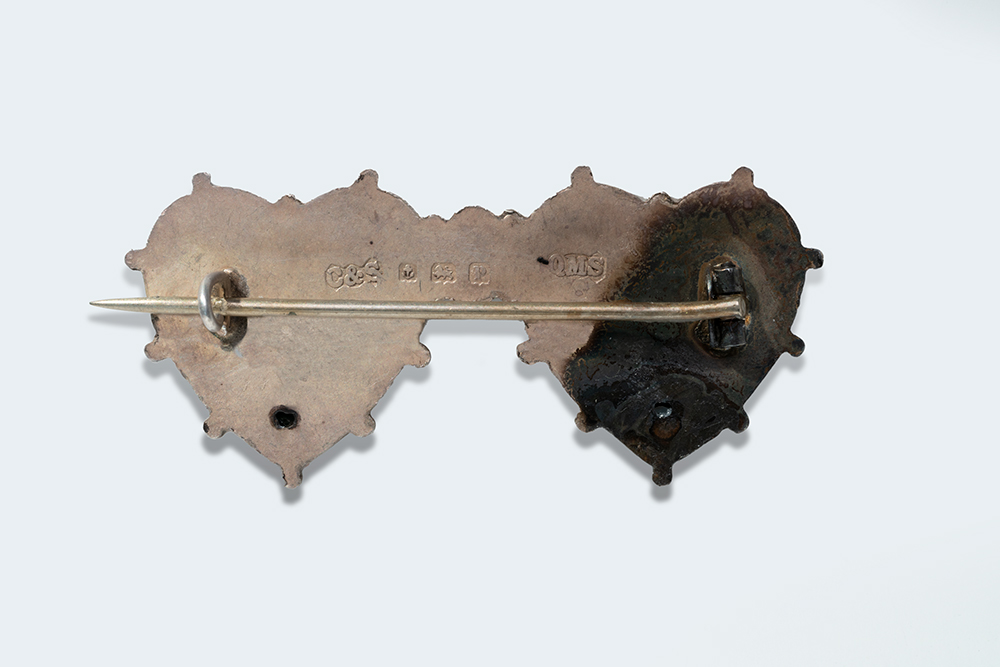Pins
“... That [hope in Fate] gives you great courage, and with the help of the roar of the motor and hurricane blast of the wind as you split the space, all fear becomes quite humble; it must.”
—First Lieutenant Jack Wright, an American aviator in France
Worn on the inside of coats, on lapels or tucked inside pockets, pins offered tangible symbols in which faith, hope and luck intertwined. Though often commercially produced, these pins became talismans of protection once given to a service member or war worker. For both the giver and the receiver, a pin could hold well-wishes, hope and unshakeable belief in a safe return.
A talisman is an object thought to have supernatural powers or luck.
Sacre-Coeur pin


France
c. 1914-1919
Object ID: 2022.122.2
National WWI Museum and Memorial
“Hope and salvation for France” reads this Sacre-Coeur (Sacred Heart) pin. The pin depicts wounded heart of Jesus, encircled with a crown of thorns and a cross rising from the top. Worshipers expressed devotion to the wounded physical heart of Jesus as a symbol of God’s divine love for humanity, Christian sacrifice and redemption. World War I contributed to the Sacre-Coeur’s popularity in France, as it provided a distinctly religious component to French struggles against invading German forces.
Royal Artillery Mizpah sweetheart brooch


Great Britain
1914
Object ID: 2023.58.1
National WWI Museum and Memorial
The Hebrew word, “MIZPAH,” seen on this two-heart brooch, became a favored inscription on American and British lockets, rings and pins. “Mizpah” (watchtower) on the first heart refers to the biblical line in Genesis 31:49: “The Lord watch between me and thee when we are absent one from another.” The second heart depicts the Royal Artillery regimental badge, featuring a crowned artillery gun and the regiment's Latin motto: “Ubique, quo fas et gloria ducunt” (Everywhere whither right and glory lead). Brooches like these became popular gifts exchanged between departing servicemen and their sweethearts in hope of swift reunion.
